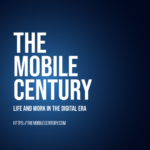Angela Y. Kung, Partner / Co-Chair of the Technology, Communications & Media Practice at Mintz
Benefits of digital technologies
There is no question that the explosion of digital technologies has fundamentally shaped the way we live our lives. When I look around my home, I have smart devices everywhere that help me navigate the day.
The blinds in my bedroom open promptly at 7:00 am to let the sunlight in and wake me up, no matter how many times I hit the snooze button on the alarm clock. I can start and warm up my car with the push of a button on my phone. And when I head to work, my garage door tells me if I accidently forgot to close it. My smartwatch gives me gentle reminders throughout the day if it thinks I have been sitting at my desk too long without taking a break to stand up, which happens more often than I would like to admit. I even have GPS devices on my dogs’ collars that let me know when the dog walker has come, where they are going, and if they are getting in enough steps for the day. When I come home at night, my home lights turn on automatically before I get to the door, which makes it easier to find my keys. And when I lay my head down before I go to bed, all I need to say is “Alexa, turn off all the lights” to get a good night’s rest before I start the process all over again.
Digital technologies have become so engrained in my life that I hardly realize that they are there. But I recognize the tremendous amount of privilege I have to be able to use and rely on them.
Need for universal access to broadband
Many people in the US are not as fortunate as I am. In fact, some people do not have access to even the most basic technologies such as computers, tablets, or other mobile phones that have become essential to modern-day living. Moreover, many Americans still lack the high-speed connectivity required to use those devices.
Indeed, according to the Pew Research Center1, some studies have found that 50 percent or more of Americans living in rural areas lack access to a broadband connection. It notes that when race and ethnicity are factored in, the disparities are even more stark. For example, 34 percent of American Indian households with children and 31 percent of Black and Hispanic households with children were found to lack access to home broadband, compared to 21 percent of white households with children.
This lack of access to broadband services is particularly detrimental in a post-COVID world, which has become increasingly virtual. US consumers are now routinely engaging in telework, telehealth, and distance learning, all of which require broadband internet access services. And the promise of virtual and augmented reality as well as the proliferation of new AI technologies makes the need for both fixed and mobile broadband services all the more important. Recent studies from Open Vault2 confirm that Americans are consuming bandwidth at exponential rates, with the percentage of individuals consuming more than 1 TB per month now nearly eight times greater than it was five years ago. With no end to this trend in sight, it is vital that all efforts are made to close the digital divide.
US Federal actions thus far
The US Congress and Federal Communications Commission (“FCC”) have already taken several actions to support the deployment of broadband services. Through the Rural Digital Opportunity Fund, and its predecessor the Connect America Fund, the FCC has made up to $20.4 billion in federal funding to support the deployment of fixed broadband and voice services to millions of unserved homes and businesses in rural America. The FCC is also in the process of implementing its 5G Fund for Rural America, which will make available up to $9 billion in federal funding to bring voice and 5G mobile broadband services to rural areas.
To ensure that broadband services are not only available, but also accessible to all individuals, the FCC has further established, through funding from Congress, the Affordable Connectivity Program (“ACP”). The ACP provides $14 billion in federal funding to allow providers of both fixed and mobile broadband services to offer eligible households a discount of up to $30 per month for broadband services or $75 per month for households on Tribal lands. It also allows providers to offer eligible households discounts of up to $50 for connected devices. The FCC recently reported3 that more than 20 million households are now enrolled in the ACP.
In addition to the FCC’s efforts, Congress has allocated a whopping $42 billion in federal funding to support the deployment of broadband services. These funds will be disbursed under the Broadband, Equity, Access, and Deployment (or BEAD) program, which is currently being administered by the National Telecommunications and Information Administration (“NTIA”). NTIA will distribute the funding to all US states and territories, which, in turn, will partner with broadband service providers to deploy broadband infrastructure and offer affordable high- speed broadband internet access services to all Americans. This historic program is expected to make substantial strides in closing the digital divide.
Preparing for the future
Because these programs, particularly the BEAD program, provide an unprecedented opportunity for the Nation to ensure that all Americans can get connected, it is critical that US policymakers get the rules and policies for implementing the programs right.
- First, agencies must ensure that funding will go only to those locations that truly lack high-speed broadband services and avoid overbuilding to locations that already have competitive broadband services. Towards that end, agencies must ensure that their broadband maps are continually updated and remain accurate.
- Second, any rules and policies adopted for these funding programs must encourage widespread participation. That means they should be flexible without overly burdensome requirements that could discourage providers from applying.
- Finally, they must include safeguards to protect against waste, fraud, and abuse. In particular, agencies must ensure that those entities that receive funding are sufficiently qualified to provide service and use the funding only for its intended purpose.
Moreover, both Congress and agencies must carefully craft long-term solutions to support broadband affordability once broadband services are deployed. Affordability programs such as the ACP have been crucial to getting individuals online. But funding for the ACP is estimated to run out in the first half of 2024. US policymakers must act swiftly to appropriate additional funding so that the millions of households relying on this program can continue to do so as broadband networks and services are being deployed nationwide.
Without ubiquitous and affordable high-speed internet access services, millions of Americans may not only fall further behind in the digital divide, but they may never get the opportunity to catch up and take advantage of all the benefits that digital technologies have to offer.
- https://www.brookings.edu/articles/why-the-federal-government- needs-to-step-up-their-efforts-to-close-the-rural-broadband-divide/
↩︎ - https://openvault.com/wp-content/uploads/2023/07/OVBI_2Q23_ Report_v4_FINAL.pdf ↩︎
Angela Kung is Co-Chair of the Technology, Communications & Media (“TechComm”) Section at Mintz, Levin, Cohn, Ferris, Glovsky and Popeo, P.C. (“Mintz”), where she advises clients on a wide range of wireless issues, including licensed and unlicensed spectrum use policies. She has particular expertise on FCC spectrum auctions as well as broadband funding programs. Earlier in her career, Angela worked in the FCC’s Wireless Telecommunications Bureau and served as a lead attorney for the FCC’s Connect America Fund Phase II Auction. She also served as a member of the General Counsel team charged with oversight of the FCC’s 800 MHz reconfiguration process. Angela received her B.A. in Economics from the University of Michigan and her J.D. from American University Washington College of Law.




